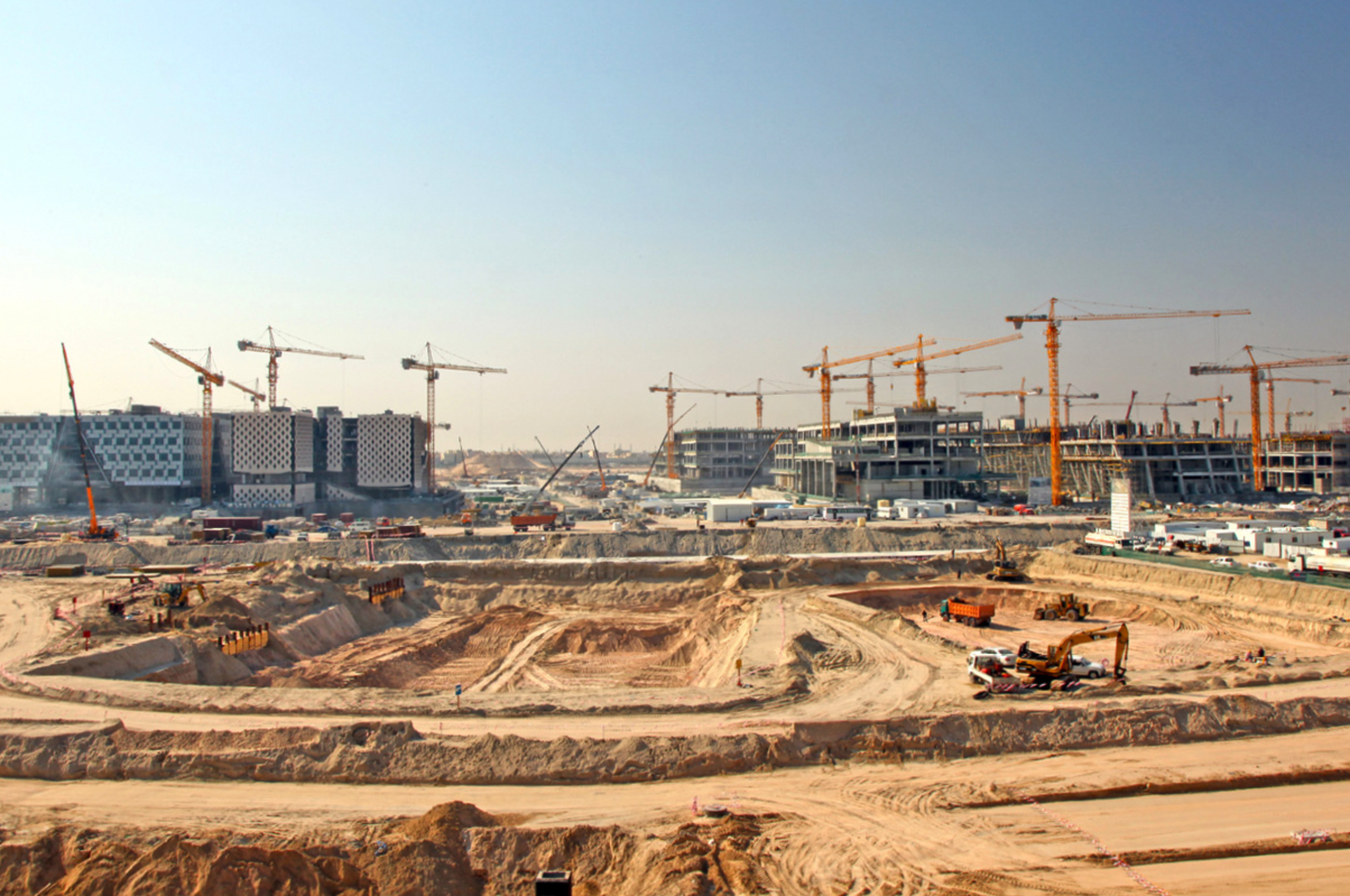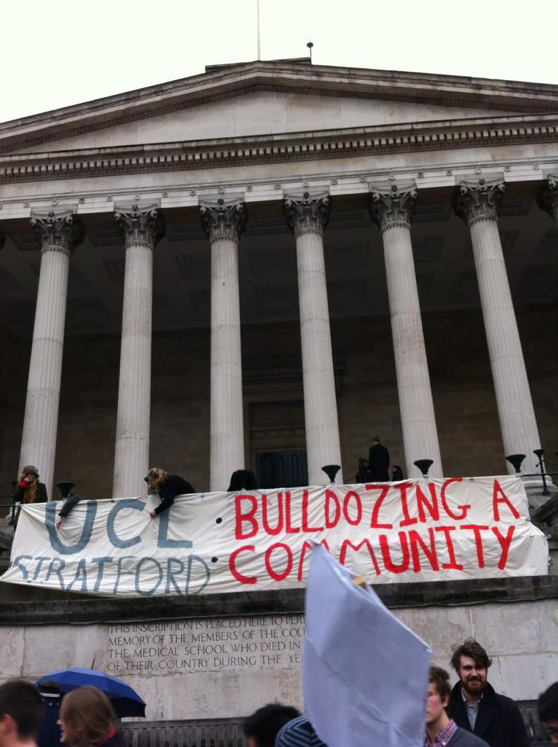
Universities are becoming engines of growth for cities, they help them compete on the global stage for talents, investments and visitors. City governments believe that the university, as a knowledge and innovation producer, can bring wealth to the city. The increasing importance of universities for city development and their real estate needs and ambitions thus have some critical implications for urban planners.
 Sabah Al-Salem Kuwait University City is under construction in Kuwait Source: C7A (https://www.facebook.com/cambridgeseven/)
Sabah Al-Salem Kuwait University City is under construction in Kuwait Source: C7A (https://www.facebook.com/cambridgeseven/)
Campus was certainly not a popular term in Europe. It is believed that the term was first used to describe the large green lawn of the College of New Jersey (now Princeton University) chartered in 1746. It describes the ideology of the American university, which leans towards pastoral and rural settings for promoting academic excellence. Such a tendency was also not very different in Europe. Even though many historic European universities were established in urban areas, they were considered to be closed and cloistered institutions. ‘Town and Gown’ describes this conflicting relationship between the university and the city. These American or European models of the university then travelled to many different parts of the world, such as East Asia and the Middle East, where the higher education sector was developed later than in the West.

The most important recent trend regarding the relationship between universities and cities is that universities are increasingly becoming recognised as anchor institutions in cities and regions. This trend is related to the emergence of the knowledge economy in globalising cities and regions. People believe that the university, as a knowledge and innovation producer, can bring wealth to the city. Theories of Triple Helix and Regional Innovation Systems support such ideas. When universities, industries and governments collaborate, it is believed that innovation and the knowledge creation process can be accelerated so that cities and regions can enjoy economic benefits created from those processes. Such a belief has been widespread since the success of Silicon Valley and Route 128 in the US.
It will be apparent that these are examples from the US, and it can be difficult to identify their counterparts in Europe and elsewhere. Indeed, these US models are not replicable anywhere else, mainly because the successes of Stanford University and MIT were primarily based on military-related research funding from the US government during the Cold War era. Policymakers, planners and university managers are not supposed merely to copy these so-called best practices but to formulate their own means of collaboration, based on their particular socioeconomic and political contexts. This is not only the case for cities in English-speaking countries but also for many cities in developed and developing countries where the higher education sector is growing. For example, the number of international students enrolled in Czech universities tripled over 15 years to 85,000. Universities, in fact, rarely shrink.
The way that the university engages with the urban environment needs to be considered carefully. The buildings and its campus interact with their surrounding environments once they are built. They shape the neighbourhood together. Students from outside are attracted to the neighbourhood. Faculty members move in and locals are hired. Then, various kinds of new businesses are opened to serve the university population, from cafes and bars to office spaces and start-ups. If policymakers, planners and university managers can plan the university expansion together and work collaboratively, the impact on the neighbourhood and the city can be maximised and further benefits for the university and the city can be brought in. While there have not been many studies on the direct impact of a university on the local economy, one study estimates that Columbia University’s annual direct contribution to New York’s regional economy was $1.7 billion in 2007, through employment, procurement and construction activities. Again, this is an exceptional case, but to a certain degree, it shows that any university and city can share their benefits and develop together.
Existing literature stresses several aspects when considering university-involved urban development projects, such as university leadership, the internal structure of the university, partners and intermediaries, relations with the neighbourhood and city government, planning and financing. Again, there is no one-size-fits-all approach because every university and every city are different. Therefore, an attempt to copy another model is rather risky, but experts argue that systematic, continuous and comprehensive joint planning process cannot be stressed enough. When considering the recent trend of increasing government investment to improve the international competitiveness of universities, and that these investments are often realised through new buildings and new facilities on campus, it is more legitimate if such public investments can also benefit the neighbourhood and the city. Through reflecting opinions from various stakeholders, from locals to international students, the plan can be richer and clearer, and the benefits can be more widely shared.
The role of the planner is particularly vital in this process because there have been several cases in which university expansion activities have had a negative impact on the surrounding neighbourhood. This has been prevalent in the US. Probably, the most well-known case is the University of Chicago’s federal government-supported urban renewal project in the 1960s. It is known that the university displaced a large part of the African American population living in the Hyde Park area to foster it as a more university-friendly neighbourhood. This phenomenon is often found today, such as in Columbia University of New York’s Manhattanville Campus project in West Harlem and University College London’s attempt to redevelop Carpenters Estate, which is a social housing block in East London.

The university is becoming increasingly globalised and profit-oriented, but it still has great potential to contribute to the development of its hosting neighbourhood and city. Planners, by working with the university and the local government, should be a proactive mediator to mitigate the negative impacts of the university on the city and to develop a way that every stakeholder can benefit from the expansion activities of the university.